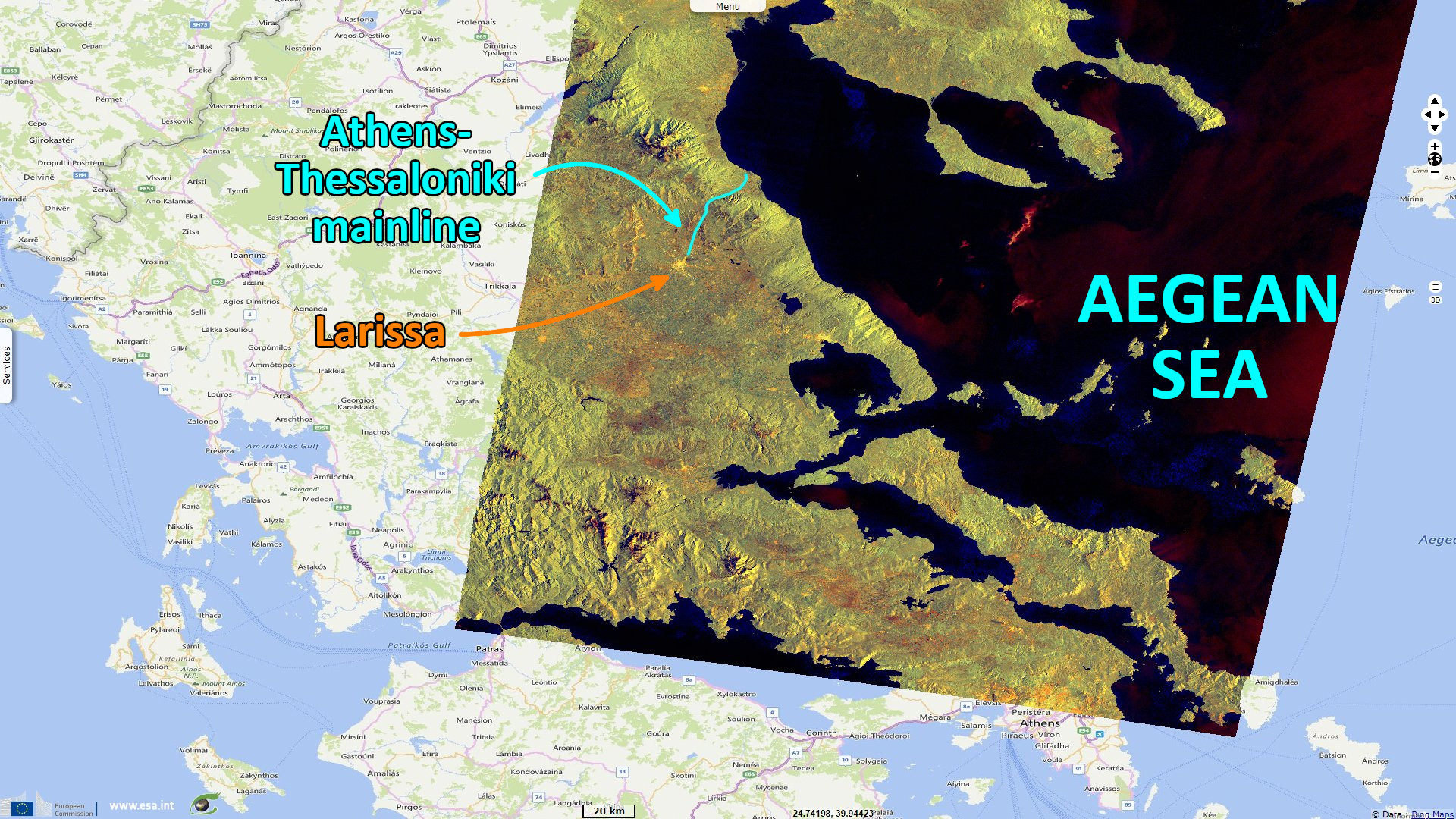Sentinel-1 shows derailed cars after a fatal train collision, Greece
Sentinel-1 CSAR IW acquired on 20 February 2023 at 16:32:39 UTC
Sentinel-1 CSAR IW acquired on 21 February 2023 at 04:31:23 UTC
Sentinel-2 MSI acquired on 22 February 2023 at 09:20:29 UTC
Sentinel-1 CSAR IW acquired on 04 March 2023 from 16:32:15 to 16:32:40 UTC
Sentinel-1 CSAR IW acquired on 05 March 2023 from 04:31:24 to 04:31:49 UTC
Sentinel-1 CSAR IW acquired on 21 February 2023 at 04:31:23 UTC
Sentinel-2 MSI acquired on 22 February 2023 at 09:20:29 UTC
Sentinel-1 CSAR IW acquired on 04 March 2023 from 16:32:15 to 16:32:40 UTC
Sentinel-1 CSAR IW acquired on 05 March 2023 from 04:31:24 to 04:31:49 UTC
Keyword(s): Land, infrastructures, transport, security, rail, Greece
Numerous train cars caught fire following the collision. At least 57 people were killed, and 80 others were injured, with 25 of them suffering serious injuries. Of the injured, 66 were hospitalized, with six being admitted to intensive care units.
A switch error from the stationmaster at Larissa (who had only been working for one month there) was pointed as the direct cause of the accident.
However, this this wreck followed a series of other rail accidents with no casualties. The lack of lack of public investment since the deep financial crisis has been blamed, in particular Greece had initially planned to implementant the European Train Control System for 2020 but it was delayed to late 2023. The section where the accident took place, located 27.3 kilometres north of Larissa, was double-tracked and equipped with automatic controls, but switching and signalling were still being controlled manually.





